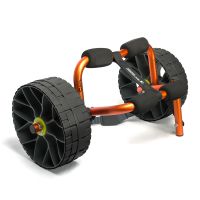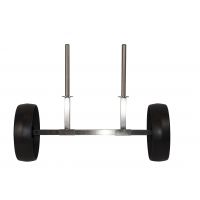Cart is empty
Buying a Sit-on-Top
Here is some background knowledge so you know what to look for and can ask relevant questions and so be able to make an informed decision when purchasing. If you require further information, please contact Australis on 02 4285 2000.
There is a separate page for:
What to Look for in a SIT-ON-TOP KAYAK
This section outlines the features to look for when looking at a sit-on-top.
If you require further information, please contact Australis on 02 4285 2000.
Design
- Hull Features
- Seat Width
- Feet Position (in relation to seat height)
- Feet Position (in relation to hips)
Contruction
- Kiss-offs
Price
- Standard Features
DESIGN
Hull Features
The first thing that you need to make sure is included in your sit-on-top is "Rocker".
Rocker is the "curve" that runs along the bottom of the craft from the front to the back.
If a sit-on has rocker included in the design of the hull, you will benefit by getting a smoother ride. This is because the rocker allows the boat to "tilt" as a natural part of its motion to cruise over small swells and motor boat wakes. Where the hull curves up at the rear, this allows the kayak to "tilt" as the water follows the natural curve of the bottom of the kayak.
If the sit-on is noticably "flat" from the front to the back (has no rocker), its action will be more jerky and it will act like a see-saw. When going over a wave the sit-on will run straight up and "slap" down the other side, if there is no rocker at the back. Also, if there is no rocker curve at the front to "catch" the kayak and smoothly guide it back down, it will just slap down onto the water, giving a noisy ride.
A sit-on with rocker at the back is also easier to turn.
This is because when you lean back, your centre of balance will shift to the rear, lifting the front of the sit-on slightly off the water and allowing it to easily glide across the water into the desired direction.
Whilst the inclusion of rocker makes it easier to turn a sit-on, it can make it harder to keep it on a straight line. To compensate for the rocker, you will also need to make sure that the sit-on has a keel moulded in. A keel gives a point to pivot off when turning and assists with straight-line tracking.
The bottom line is...
Look for a sit-on-top that has "rocker" included in the hull design, but also has a keel moulded in.
Width of the seat
Whilst many sit-ons are around the same overall width, some are quite "chunky" through the sides, therefore making the actual seat narrow.
When comparing different brands of sit-ons, make sure that the seat pan is wide enough for you to sit in there comfortably.
If the seat is too narrow, you will feel it because it will feel tight on your backside, and if you sit in there for extended periods of time, you can end up with "pins and needles" in your legs or backside.
The bottom line is...
Look for a sit-on-top that has a seat with adequate width to take your frame.
Feet Position (in relation to the seat height)
Your feet need to be positioned lower than your seat.
If your feet are at the same height or higher than the seat (even slightly), Hamstrings and lower back muscles are on full stretch for extended periods of time. This can result in injury because of a reduced range of motion to absorb the dynamics of paddling, or muscle cramps and tingling due to reduced blood flow to the area or localised pressure on nervous tissues.
Signs that the seat position is incorrect are:
- Pain in the muscles in the groin, even when just sitting on the craft;
- "Pins and Needles" in your backside or legs;
- A sharp pain in your back or legs when paddling over small boat wakes and swells.
The bottom line is...
Look for a sit-on-top that has the feet positioned lower than the seat.
Feet Position (in relation to the hips)
For optimal biomechanics, your feet should be around hip-width apart.
Some sit-ons (especially the smaller ones) "taper" towards the front of the craft (where you put your feet). Forcing the feet together in this seated position puts strain on the muscles of the outer leg that run from the hip to the knee.
Paddling a craft with inadequate feet width, even for short periods, could cause long term damage.
The bottom line is...
Look for a sit-on-top that has the feet positioned about hip-width apart.
CONSTRUCTION
Kiss-offs
Kiss-offs are pillars that are moulded into a sit-on-top that hold the top and the bottom of the sit-on-top apart.
They provide structural support because they minimise any flexing movement caused by someone getting onto or off of the sit-on-top.
As weight is put onto or taken off the top of a sit-on-top without kiss-offs, the top and bottom flex with all the pressure being concentrated on the side seams of the craft. A possible consequence of long term movement at an unsupported seam is that the kayak might split.
Another important function of the kiss-offs is to provide drainage if water comes over the top (when using it in the surf or climbing back onto it from the water).
To gain maximum benefit from the kiss-offs with regards to drainage, they need to be positioned as low as possible. A kiss-off positioned at a high point will not provide any drainage advantage.
Whilst drainage is an important function of kiss-offs, the primary function is to provide support to the overall structure of the craft.
All sit-ons are hollow and most do not have any internal structural support because there is not a place to access the inside to put something in. As a result, there is not internal structural support mechanism.
The bottom line is...
Look for a sit-on-top that has "kiss-offs" included in the design to provide internal structural support and that they are positioned as low as possible to provide maximum drainage.
PRICING
Standard Features
To get a true indication of value when comparing different brands, you will need to consider what features that the manufacturer includes as "standard".
- Warranty (for how long and covered by who?)
Warranties vary greatly amongst brands and can be anywhere from 1 year to 10 years. Also you need to ask who the warranty is covered by - is it the shop, the importer or the manufacturer?
- Paddle (included in the price or an option?)
Some brands will include a paddle in the price, whilst others will require you to purchase one as an option (although it is a necessity if you want to be able to use your new sit-on-top).
- Hatches (included in the price or an option?)
Some brands will include hatches as a standard feature on the sit-on, whilst others will allow you to have them included as an option (for a price).
- Hatch Size
Whilst some sit-ons do have hatches, the usefulness does vary.
Some hatches are so small that they are basically useless.
If access to the internal storage areas of your new kayak is going to be important, make sure that the hatch is going to be large enough to allow you to put your possessions inside.
The bottom line is...
Know what is included in the price as standard, and what is an option that will be included if you pay extra.
© 2013-2026 Australis Canoes. Powered by AVS Online Store

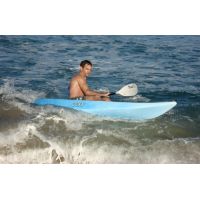
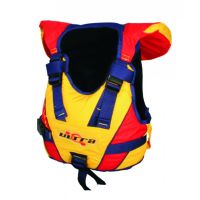
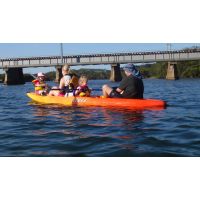
.jpg)
